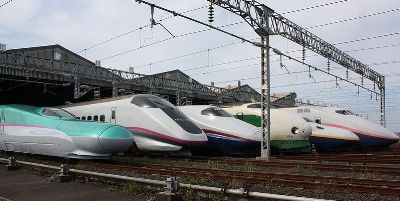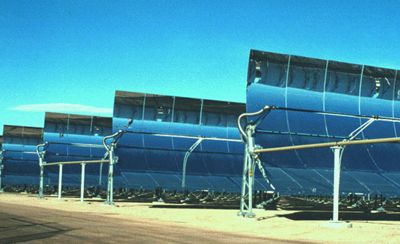September, 2010
May We Live in Interesting Times
2010 is one of those numbers divisible by ten, and since most of us have ten fingers and ten toes, we seem particularly partial to attaching significance to such years. When they roll around, folks like to make all sorts of grand summaries, reflecting the general assessment that we have thus achieved august things simply by remaining in existence another decade or so. Forty years from today will take us to the middle of the current century, 2050, another signal year, for if there is a number that has greater meaning for us than one divisible by ten it is one that is also divisible by five, the quantity of fingers on the average hand.
An earlier forty-year span commenced as people in the U.S. felt we were living in Camelot. There was an aura of good feeling connected to the presidency of Jack Kennedy whose election to high office was in 1960. After that rather innocent beginning, huge changes, not all so good but including great Civil Rights advances in the U.S. and the collapse of the Soviet Union, were to occur through 2000, the end of the millennium.
So, with all this numerology-like focus on meaningful numbers, we are especially now disposed to seek the keys to both past and future in even grander than normal punditry and prognostication. With the aid of a couple articles and a book on such things (sources below), let us here follow suit with a fitting emphasis on what may make our times more interesting in the ten to forty years just ahead.
It is all too easy to forecast looming disaster scenarios. Who with senses and any form of brain has not heard or seen in one or twenty movies that we are headed for dooms of many varieties, likely sooner rather than later? Some of the more popular nightmare conceptions and a few less well noted suggestions of our future fate include:
- Clones of humans. While we in the U.S. do not want to get near this possibility, scientists, leaders, and eccentric, wealthy individuals in certain other countries may not be squeamish. The technology, though quite complex, apparently is there or soon will be. Human cloning on a small scale is considered likely my mid-century.
- Robots with rudimentary consciousness. More and more sophisticated and autonomously operating computers may lead to machines that can repair or recreate themselves, learn, improve, and even have self-awareness. We depend ever more on computers of vastly increasing computational function. At some point, this trend is expected to lead to devices acquiring not merely super intelligence but also the ability to think about themselves as separate entities. In that event, a lot may depend on whether these new beings have embedded in them the equivalent of Isaac Asimov's protective "three laws of robotics," to assure no major conflict with our kind.

- Arctic melting. Barring a dramatic and unanticipated cooler adjustment of the climate, ice-free polar summers, especially in the Arctic, are coming. While this may be great for Northwest Passage commercial ship traffic, there are many complications that will not be so wonderful, among them loss of species, territorial disputes and fights over access to resources, disruption of ocean currents, and alteration of weather patterns in the higher latitudes. Gradually there will also be more storm surges and major losses to estuaries or among low sea level inhabited areas.
- New kinds of life. Existing species will probably be altered and "improved" much more than is being done today. Large portions of animals' and plants' naturally occurring DNA are in for replacement, and not merely in isolated species but in dozens or even hundreds of them. Will they also be programmed to fail, as synthetic humans were in the movie "Bladerunner," and/or contained within labs by various safeguards, or might they get out into the biosphere, breed with existing forms of life, and in unforeseeable ways alter the fauna and flora forever?
- A large California earthquake. Each year that passes without the "Big One" increases the probable severity once a major earthquake inevitably occurs in the Golden State. Damage sooner or later will be in the hundreds of billions of dollars range or greater, with projected loss of human life in the thousands. As we have seen time and again for the Third World, however, emerging market regions are even more susceptible to catastrophic consequences from big tremblers.
- An asteroid strike. One thing regarded as improbable, despite Hollywood blockbusters and their marvelous special effects and film scores, is an asteroid or comet collision so large as to cause the end of civilization or even of our species. The odds get much greater, though, when one considers smaller but still scary asteroid or comet impacts, such as the one that occurred in Siberia in the early 20th Century. It flattened trees and killed all above ground mammals over hundreds of square miles. We have a moderate likelihood of such an event again by 2050, and the next one might occur over a city.
- Major warfare. There are those who will tell you just when some form of Armageddon, the biblically predicted end of conditions as we know them, will occur. 2012 is given in many predictions I hear about recently. Others cite later years, but several of them agree on the "end of times" occurring by 2050. I personally think the logic is more convincing regarding a World War III debacle, yet not such a horrendous conflict that it wipes out humankind. There have not unfortunately in the modern era been many generations with a lifespan essentially free of serious levels of warfare. Yet so far this has been the experience of "Baby Boomers." Korea, Vietnam, Iraq, and Afghanistan do not count. Severe as they have been for local populations, these military struggles are on a small scale compared with The Hundred Years War, World War I, World War II, etc. People say we just cannot have another world war due to the tremendous devastation that would follow the employment of modern nuclear arms. The same argument was brought up in the early 20th Century about the use of then more efficient machineguns and later came into some vogue once more as airpower threatened millions of urban civilians.
- Sky high petroleum product prices. Experts tell us that a price of oil around $80 a barrel is about normal these days, but that with increasing demand, efforts by governments to curtail the use of certain fossil fuels, and decreasing supplies, by 2050 the price of a barrel of oil may be much higher and that a gallon of gasoline by then may go for $25 or more, with big impacts on transportation, business, agriculture, population distribution, etc. How likely? Very.

- Vertebrates replaced by invertebrates, fauna by funguses. In periods of great change, simpler life forms have a great edge over more complex ones. Relatively fundamental types of life can reproduce faster and more numerously and so can adapt more readily to alterations in their surroundings. We are involved now in a transformation of the biosphere so profound it is likened to five earlier epoch-ending events of devastating species die-off, the most recent previous one occurring 65 million years ago when a collision with a space object led to the extinction of dinosaurs. While we are not expected to have so abrupt a catastrophic occurrence, the sum total of the changes in the climate and the overall environment are already having massive effects on the surface of our planet, ones that, if unchecked, could potentially rival those earlier five for remaking the appearance of "Life on Earth." Trends are now apparent on land and in the sea. Plant species of higher development are dying off in places under environmental or climate related stress or are being forced out by urban sprawl. Yet molds, mushrooms, yeasts, or other fungal forms can make house just about anywhere there is a bit of moisture, even inside our own homes. Meanwhile, over fishing, pollution, increased acidity in the oceans, and higher sea water temperatures are wiping out coral reefs, the fish that directly depend on them, and larger aquatic vertebrate species. Studies now indicate their niches are being taken over by jellyfish and other lower life forms with which we as a species have a less amicable relationship.
- Population growth, up to a point. By 2050, the U.S. population is expected to leap up to over 400,000,000 a roughly one-third increase. That of the globe as a whole is also anticipated to rise by about a third, to over nine billion. Population shifts and increases will be affected both by immigration (legal and illegal) and by birth rates vs. death rates. Eventually, if nothing is done to offset population growth, death rates will achieve equilibrium with the rates women are having babies, then rise to higher than the birthrates can compensate for them, and our populations will be in net decline. Nobody knows today what is a sustainable population for our country, let alone for the world. The population density in Japan (census figures indicating about 128,000,000 live there), for instance, a nation about the size of California, is much higher than in the U.S., suggesting that, though it may not be comfortable, we could deal with much greater population increases here. On the planet as a whole, however, signs of severe stress on the environment and on available resources already abound. No species can continue to grow beyond the capacity of its environment to support it with essential resources. Some believe we shall be seeing water wars by 2020. Diseases also develop and spread more easily in large urban settings such as are arising in several spots across our planet. If we do not limit our populations, sooner or later nature will do it for us.
Notwithstanding the daunting list above, it is by no means certain that the remainder of our or the next generations' lifetimes will be filled with doom and gloom. Here are ten brighter future possibilities that may help balance out the negative:
- Great advances in "ordinary" healthcare and disease control will make great differences in the quality and expectancy of life, particularly so in the currently undeveloped world. The biggest change may be not in new discoveries but in the provision of medical and dental basics to many hundreds of millions or even billions who lack them today. Yet, in addition to that, research will likely provide fresh medications for the healthcare arsenal, some as markedly effective as penicillin was in its heyday.
- Although many might decry the projected increase in U.S. population as well as the immigration which has already made and will continue to make much of that increase probable, the demographic math is anticipated to work very much to the benefit of the U.S. economy. While, due to much lower birth or immigration rates in prior decades, nations such as China, Japan, Russia, and Germany will be struggling to simply replace their generations and hard-pressed to sustain their increasingly aged populations via dwindling workforces, our country's average workforce age by 2050 will only be a comparatively young 48, thanks largely to higher birth rates among immigrants and minorities, especially so thanks to highly productive and family-oriented Latinos. By 2050 they are expected to make up about one-third of the kids here. Compared with Europe and Asia, our economy will still be humming along.
- In the decades ahead, we shall wean ourselves for the most part of fossil-fuel-based individual or family transportation. Mass transit, bicycling, electric autos, smaller vehicles, increased walking, shorter distances between home and work or marketplace, etc. are likely to all be factors in this transition.
- The different major faiths of the world will find ways to be more tolerant of one another. They will have to. We can no longer afford the kinds of culture-based skirmishing that prevailed several hundred years ago during the Crusades. As part of this, there will probably be breakthroughs in relations between India and Pakistan plus others between Israel and its Islamic and/or Arabic neighbors, as well as progress in relations between the population and government of the United States and those of the Islamic world. There will be too many demographic and economic costs to sustaining recent levels of intolerance and conflict. In addition, the larger global population will become even more interdependent between regions and subgroups. The planet will be more like the melting pot that the U.S. has already become. Just as it is now in neither China's of America's interest to wage war between them, because terribly destructive to the economy of each, so in the global village of tomorrow there will be more incentives favoring peace between different peoples. Further, some nations that now are providing most of the hothead mentalities behind terrorism will on average be aging, and older outlooks tend to be wiser, or at least to have less energy for conflict.

- Today's most bellicose totalitarian regimes, particularly in Cuba, North Korea, and Iran, might well become more genuinely democratic, interested in economic development instead of military confrontation, and willing to join in the advantages of globalization and economic interdependence.
- Robotics, further computer enhancements, internet connectivity, medical data storage, and digital analyses will be increasingly and effectively deployed in the search for healthcare adequacy for our expensively aging populations.
- Unmanned space exploration and even limited human activity in space will be expanded, yielding much greater knowledge of the Solar System. The first proof of low levels of life on other planets or their moons may well be found by mid-century. The debate could then rage whether life began on Earth and was "seeded" via asteroid collisions (having caused upwelling of our life-rich crust debris into space) from here to other spheres with opportune environments for the genesis of life or vice versa.
- Organs will be grown in the lab for use as food or in transplants. This may begin on a small scale and with some of the "simpler" organs, such as undifferentiated "meat" for human consumption that avoids the traditional life cycle, but eventually could include "farm" laboratories for the production of thousands of non-human organs for the food industry and of human ones for the replacement of patients' vital parts: hearts, livers, lungs, etc. Still later, merely cosmetic organ replacements may follow from this new type of "farming."

- New technologies will provide the energy we need to transition from dependence on fossil fuels. Among the more promising for this country in the next forty years, huge banks of mirrors will be used to focus solar energy on special water and saline solution towers to power steam turbines. Other breakthroughs will allow the efficient storage and transmission of energies thus generated to communities hundreds or thousands of miles away where it will be required.
- The great unknown. Forty years ago, few if any could have predicted the vast scope of discoveries, improvements, and changes that would be the reality of the 21st Century, for instance, humans having been on the Moon, the Hubble Space Telescope images, cyclotron research on the verge of yielding knowledge about the first nanoseconds of our universe's origins, huge increases in our knowledge of the beauty and diversity of the Solar System, superconductivity, now almost routine advances in medicine such as cancer fighting, prosthetics, etc., computer, the internet, and cell phone use as ubiquitous as Bic pens, and on and on. If we look back but a bit further in history and then come forward from there to the present, how many, forty years before their widespread practical use, could have predicted electric light bulbs, radar, microwave ovens, radios, television sets, penicillin, air-conditioning, skyscrapers, ironclad ships, gene therapy, synthetic rubber, frozen dinners, DNA analyses, digital photography, atomic energy, heavier than air planes, plastics, vaccinations to prevent many childhood illnesses, and so forth? Think how vast have been the changes wrought by just these innovations. No doubt there will be at least equally weighty developments over the coming four decades, and the "Back to the Future" ordinary conditions of 2050 would be even more puzzling and amazing to a visitor from 2010 as anything Michael J. Fox's character encountered on his time traveling sojourns.
Few of us sixty or older in 2010 will see that "Brave New World," but it is fun to speculate. We might as well be optimists too and expect that, just as they have in the last couple generations, the creative and positive forces about to be unleashed will outweigh the negative in the coming years.
Primary Sources:
40 Things You Need to Know About The Next 40 Years. in Smithsonian, 40th Anniversary Issue, Volume 41, Number 4, pages 25-126; July-August, 2010.
The Next 100 Years: A Forecast for the 21st Century. George Friedman. First edition. Knopf Doubleday Publishing, 2009.
2020: What Happens Next. in Forbes, Volume 186, Number 5, pages 50-57; September 27, 2010.
|



